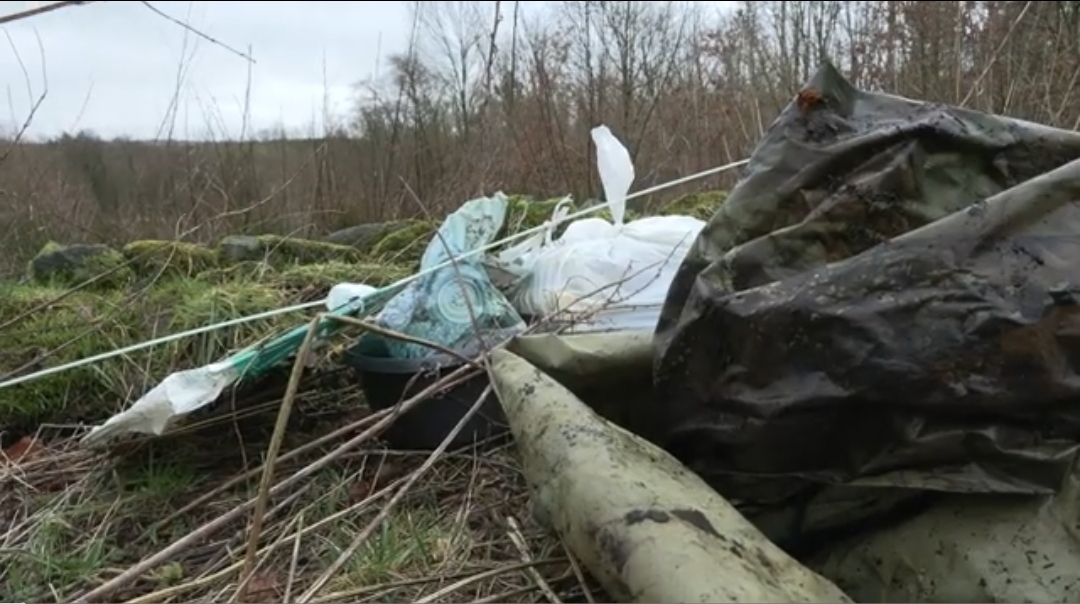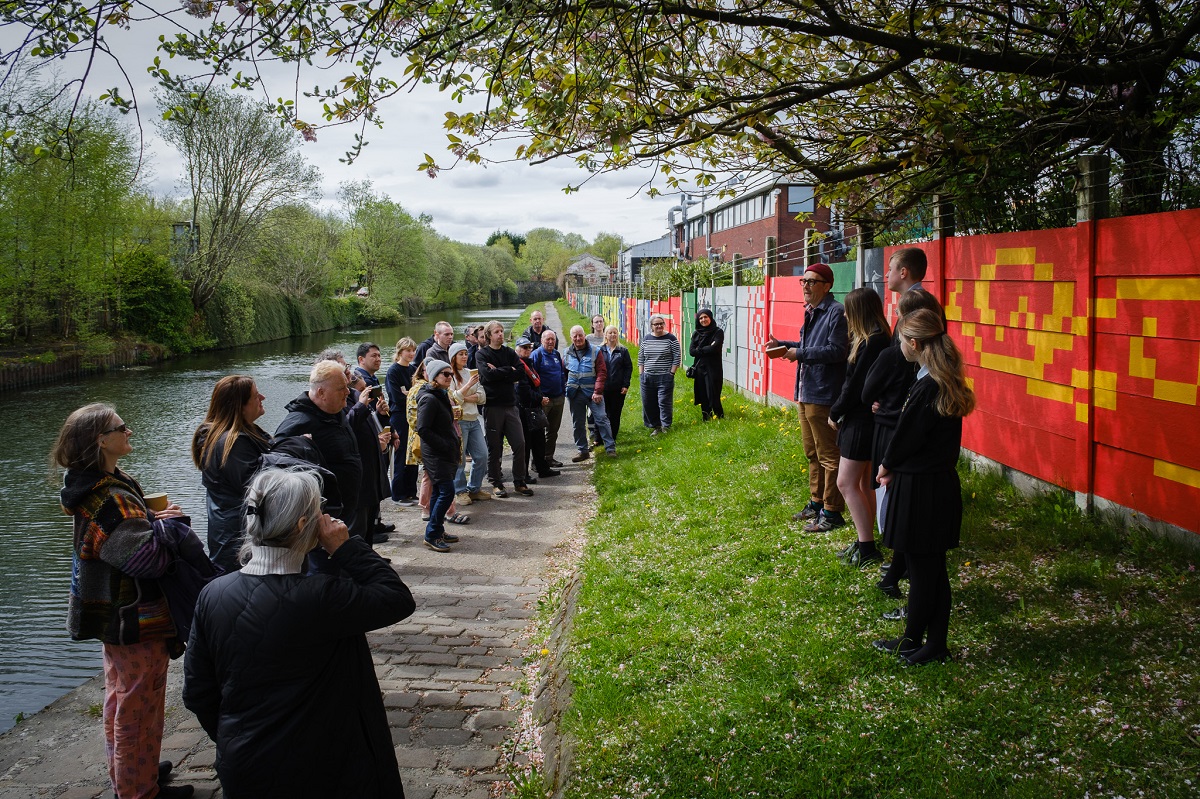Hyndburn's cultural revival gives its communities a voice
The idea that East Lancashire is lacking in culture just isn't true - and that's especially the case across Hyndburn
Almost as soon as you walk into the pop-up cafe in Clayton Community Centre comes the question: “Can I get you a brew?” It’s instantly welcoming. Patterned tablecloths, bright pictures on the walls and a dresser filled with artwork made by people who have been dropping in for a free cuppa and a creative session on Wednesday mornings.
This is one of many projects run in Hyndburn by arts programme Super Slow Way, and sitting down together over a pot of tea is often how they begin. There’s no pressure here in Clayton Community Centre to chat or to take part in a workshop – which so far this year have included flamenco guitar lessons, Scandi paper cut wall hangings and how to use a sewing machine. You can sit quietly with your own thoughts if you prefer.
The cafe is fairly quiet this morning. There’s a woman with a baby and an elderly man, who finishes his drink then sits outside on the steps for a while, watching people go by. Outside the building, where there have been problems with rubbish being set on fire and other anti-social behaviour, there’s a wall that will soon be transformed into a mural by screenprinter and muralist Craig Atherton and students from Accrington College.
Nearby in Church, artist Rebecca Chesney, who last year exhibited at HOME in Manchester and at the British Textile Biennial, worked with members of the community to clear and replant a ‘pocket park’ that will eventually become part of a Linear Park along the 20-mile stretch of the Leeds and Liverpool Canal from Blackburn to Pendle. All of these are artist-led projects that came out of conversations with the local community.
“We ask people what they want. It's not ‘we're doing this and this is all you’re getting’,” says Zara Saghir, assistant producer at Super Slow Way, who grew up in Accrington. “It's: ‘What is it that you want to do? What is it that we can help with? What do you want to see more of in the arts’.”
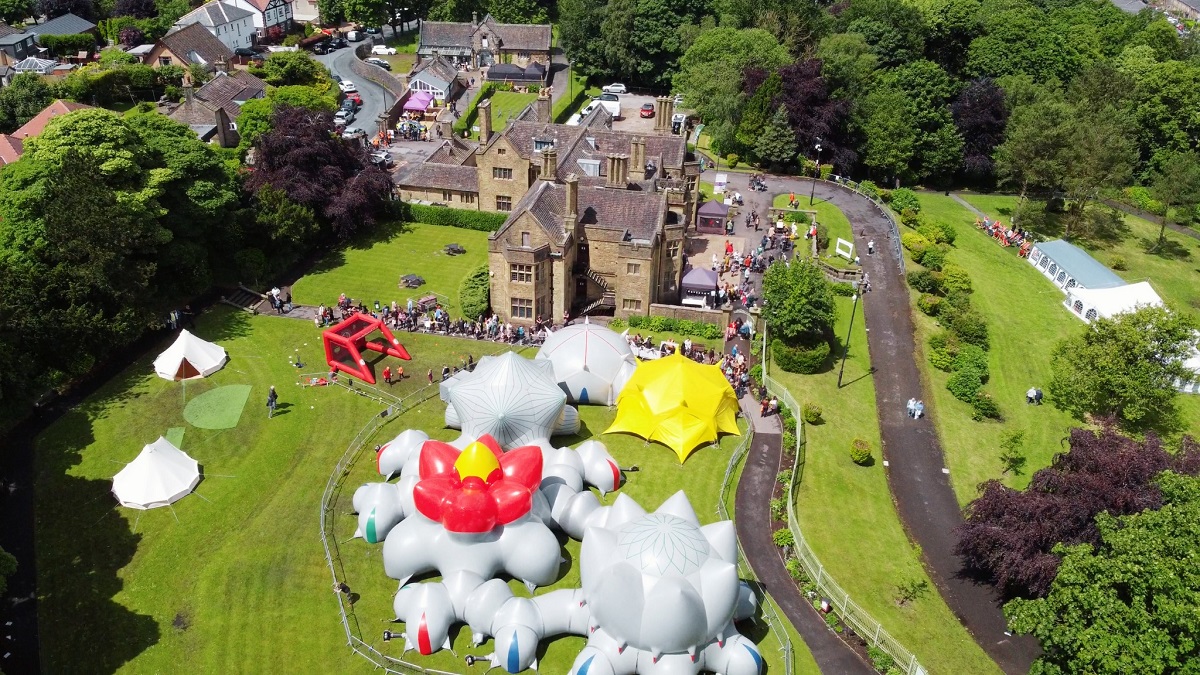
Haworth Art Gallery. Credit: Hyndburn Council
It’s been nine years since Super Slow Way launched in East Lancashire as part of the Arts Council’s Creative People & Places scheme, which aims to increase involvement in creativity and culture in areas where it is significantly below the national average. Led by former Liverpool Biennial programme director Laurie Peake, who was born in Barrowford, it aims to “weave the fabric of a future cultural landscape” along the Leeds and Liverpool Canal corridor.
The first thing its team did was to take issue with the idea of East Lancashire lacking culture.
“Very quickly the programme identified that just wasn't really true,” says co-director Jenny Rutter. “There is a huge amount of culture – really rich, deep embedded culture – from all of the communities that live along the canal corridor. But it wasn’t necessarily culture that was funded through the Arts Council, and not necessarily what, at that point, the Arts Council would have considered to be culture.”
Placing artists into communities has brought these cultures to light, she says.
“We’ve invited them to come and explore the context of the canal, the context of the industrial or the deindustrialisation of the area and how that's impacted on communities. And to explore people’s lives now and how culture fits in, and what it can drive in terms of aspiration and inspiration. In some communities, it's been absolutely transformational.”
Saghir, whose grandfather moved to Lancashire from Pakistan to work in a mill, agrees that Hyndburn has always had its own, valuable culture.
“It's always been here, it was just never delved into. I think it was a lot of them and us when it came to culture, which is a thing that I'm totally against. We're all in the same town. My Grandad worked in the mill, my next door neighbour who's white, her grandad must have worked in the mill. We've got that shared history.”
A multidisciplinary artist who often uses pigments found in nature, Saghir says cultural programmes in Hyndburn have given her a sense of belonging. As a child she took part in sessions at New Era youth centre in Accrington, where they would make papier mache creations and take part in parades. Then, she says, the funding dried up so she is delighted to have the chance to bring arts back to her community.
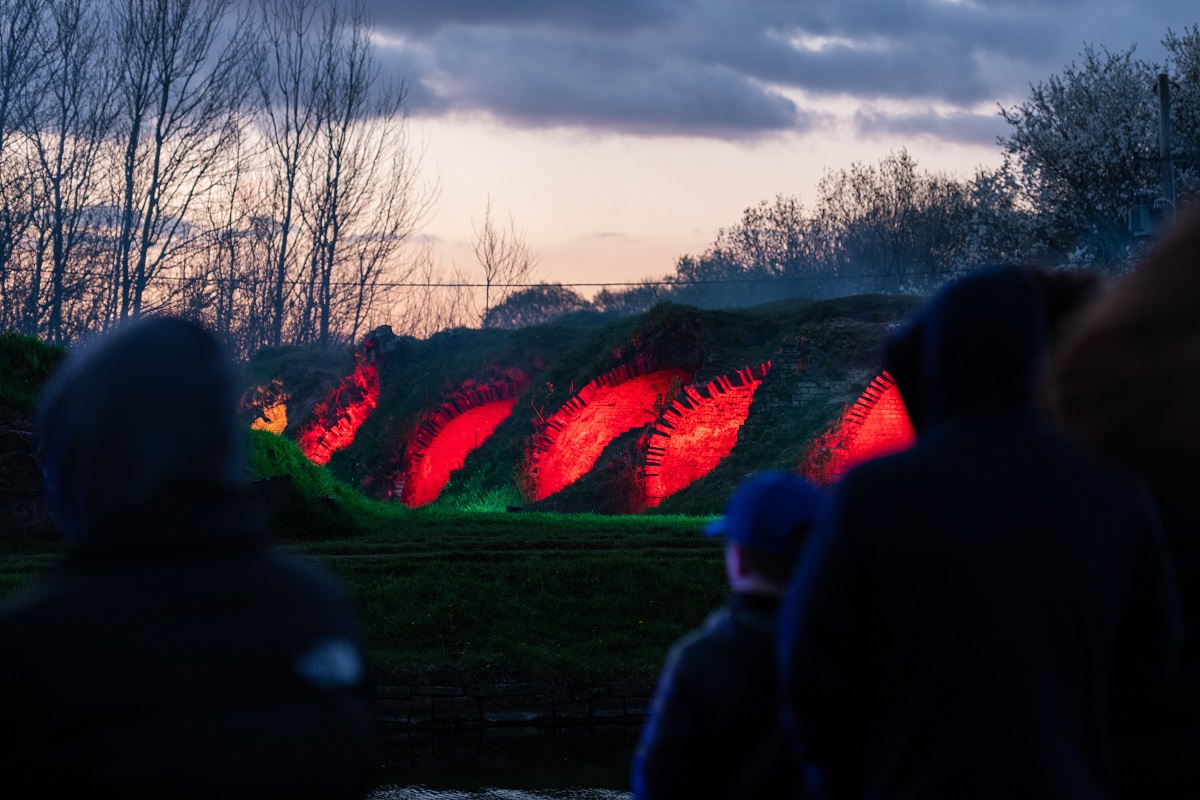
Coke Ovens - Credit: Matt Savage
“I’ve got a sense of pride in being part of that. It changed my life when I was a kid,” she says. “There is a huge mixture of cultures here and there are shared cultures as well. I’m British Pakistani and my culture is British culture, but I also have my heritage through my dad, who was born in Pakistan.
“Sometimes it’s hard to find your place. I think that's what the arts is about – finding your place with people who recognise you.”
In Hyndburn, Super Slow Way projects have included Small Bells Ring in 2020, a floating public library on board a sculptural narrowboat, which housed the UK’s largest collection of short stories and introduced local people to writers.
In 2022, artist Jonny Godsmark brought the coke ovens near Aspen Colliery back to life with a light installation that made them glow red as if in flame. Last year, Haworth Art Gallery in Accrington hosted two exhibitions as part of Super Slow Way’s nationally-renowned British Textile Biennial, which was held across East Lancashire.
Later this year will bring Kent-based artist Adam Chodzko’s Ghost to the canal – a wooden kayak that will move along the water with a passenger lying down inside, “like a body in a coffin”, giving them a new perspective of a familiar landscape. This summer, filmmaker Dirty Faces has been working with young people at Clayton Amateur Boxing Club and the community around the centre to make a short documentary about life in the town.
John Brindle, club secretary and head coach, says the footage is currently being kept under wraps but he hopes it will reflect the way in which members support each other.
He says: “They’ve done individual interviews with our boxers, particularly one who is very good and has the aspiration of becoming a pro. And they’ve gone walking about and interviewed random people.
“In the boxing club, we've got 10-year-old kids training alongside somebody who's 30 or 40, and they let on to each other in the street. And that continues when you’re going for a drink maybe in years to come. So instead of everyone trying to be one up on each other, they’re already mates.
“I’m hoping people will get a sense of achievement and pride when they see the film but I have no clue what it's going to look like.”
Ruth Shorrock, Super Slow Way community producer for Hyndburn and Burnley, says the documentary will show Clayton at its best.
Watercolour and calligraphy with Zara Saghir at Connecting Cultures. Credit: Hyndburn Council
“As well as it being a great piece of film, it’ll also be a real showcase for the club and for Clayton as a positive place, a great place to be. And it will show the creative side of what the kids have learned about filmmaking.
“What I get from the kids is that they don't actually realise how much they do. When I walked in I was expecting kids who just want to punch everything, but I saw discipline, the workouts they do, and the friendships they form, the support they have for each other. I don't think they realise how amazing that is – and seeing that reflected back to them will help them understand.”
Reflecting the community back to itself is something that is also close to the hearts of the team behind a new culture and heritage centre for Hyndburn. Earlier this year, the National Lottery Heritage Fund awarded £463,056 to the council to develop plans to transform Market Chambers and the adjacent Burtons Chambers – currently shops and flats – in Accrington Town Square. If successful, after plans are submitted in August, there will be a further grant of £4.5m to redevelop three out of the buildings’ four floors in a three-year project that will ultimately tell the stories of the borough and its people.
Hannah Saxton, head of heritage engagement for Hyndburn Council, says: “It's unique – even the National Lottery said they very rarely have a project where you’re starting from scratch. A lot of the time it's an existing museum where you're revamping an area of it but we've got something from the ground up for the community to get involved in.”
If plans for the new centre seem somewhat vague, it’s because they are open to be shaped from the opinions and ideas of local people.
Engagement work has already begun. Saxton is still brimming over with excitement at the success of their Connecting Cultures event in June, which saw a record 5,000 people taking part in a week-long programme of arts workshops and performances in Haworth’s rose garden. Some 3,000 people attended in a single day.
At the centre was artist Alan Parkinson’s luminarium, an extraordinary inflatable space, in which visitors explore a series of domes inspired by natural forms, geometric solids, Islamic and Gothic architecture.
Visitors to the event shared their thoughts on Hyndburn’s cultural places and ideas for the new arts/heritage centre. All of this will not only be fed into the plans for the new centre, but into Hyndburn’s wider cultural strategy.
“We're learning that even though everybody is welcome, the doors are open, you have to facilitate something to get people involved,” says Saxton. “The survey results from the week showed that 90% of people who came were local, and around 70% of them had never been to the gallery before. You get amazing footfall here, but it's people from far away that come to see the world-renowned Tiffany Glass collection.”
What are the barriers? “We asked why and one of the conversations was ‘we just didn't think it was for us’,” says Saxton.
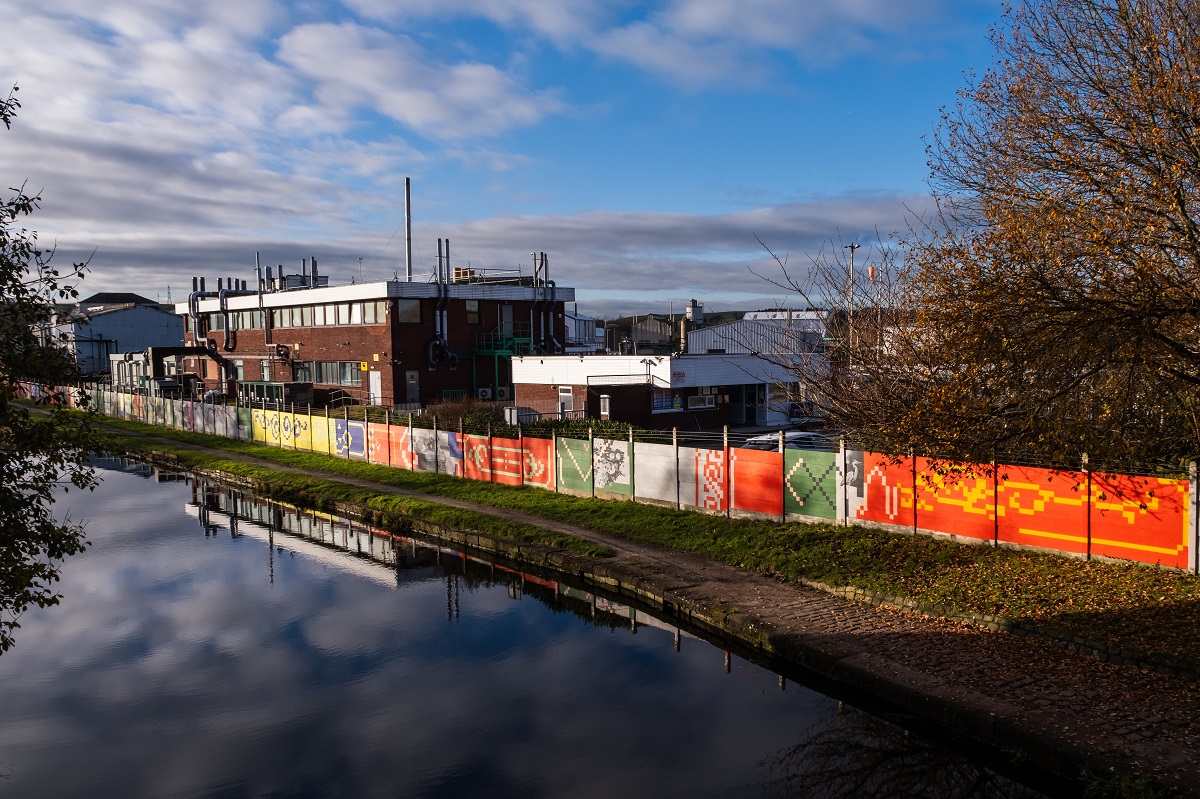
Full Hyndburn Mural. Credit: Jack Bolton
“The South Asian community in particular said they didn't feel this building was relevant to them. However, when we led workshops about colour creation with Zara Saghir, people said, ‘Oh, my grandad was in the textile industry’. That shared history and heritage is there, it's just people don't realise it.”
Gillian Berry, head of museums and heritage development and manager of Haworth Art Gallery, says involving residents is crucial in ensuring the new centre will be well-used.
“For us, it's about making it a place that the community wants to go to, and wants to engage with, rather than it being a top down, already thought out idea,” she says. “We want it to be curated by the community for the community so that it gets used, because there’s no point in creating a new building unless the community is going to use it.
“There’s a lack of identity, of people knowing why they’re here. For 200 years, Accrington was a tiny little village and had about 3,000 people who lived here. Now we’ve got 45,000 people. We’re a place of migrants but we don’t really learn at school why we’re here, why Accrington has changed so much, and about the impact it’s had locally, nationally and internationally.”
Berry is keen for people in Hyndburn to see the possibilities that encountering culture can create, whether that’s in gaining skills or finding a job within the sector, or simply feeling uplifted.
She herself found inspiration in the story of Joseph Briggs, who emigrated from Accrington to New York with very little and eventually became president of the world-famous Tiffany Studios. It was he who donated the collection of glass that is now on display at the Haworth Art Gallery.
Berry, who started as a senior visitor assistant at the gallery before working her way up, says: “I love telling the story of Joseph Briggs. I’ll never get bored of it because it’s really, really inspiring.
“I was brought up working class and I never thought I'd work in a place like Haworth Art Gallery, I thought that wasn't open to me. I thought I'd just get married and have children. But I went back to school after I'd had my child. I wanted to be her role model.
“What we're trying to build in Hyndburn is a real ecology of our culture and heritage within the borough so that people see it as a future, as a way of being, and that you can have a career in it.”
The Lead is now on Substack.
Become a Member, and get our most groundbreaking content first. Become a Founder, and join the newsroom’s internal conversation - meet the writers, the editors and more.


